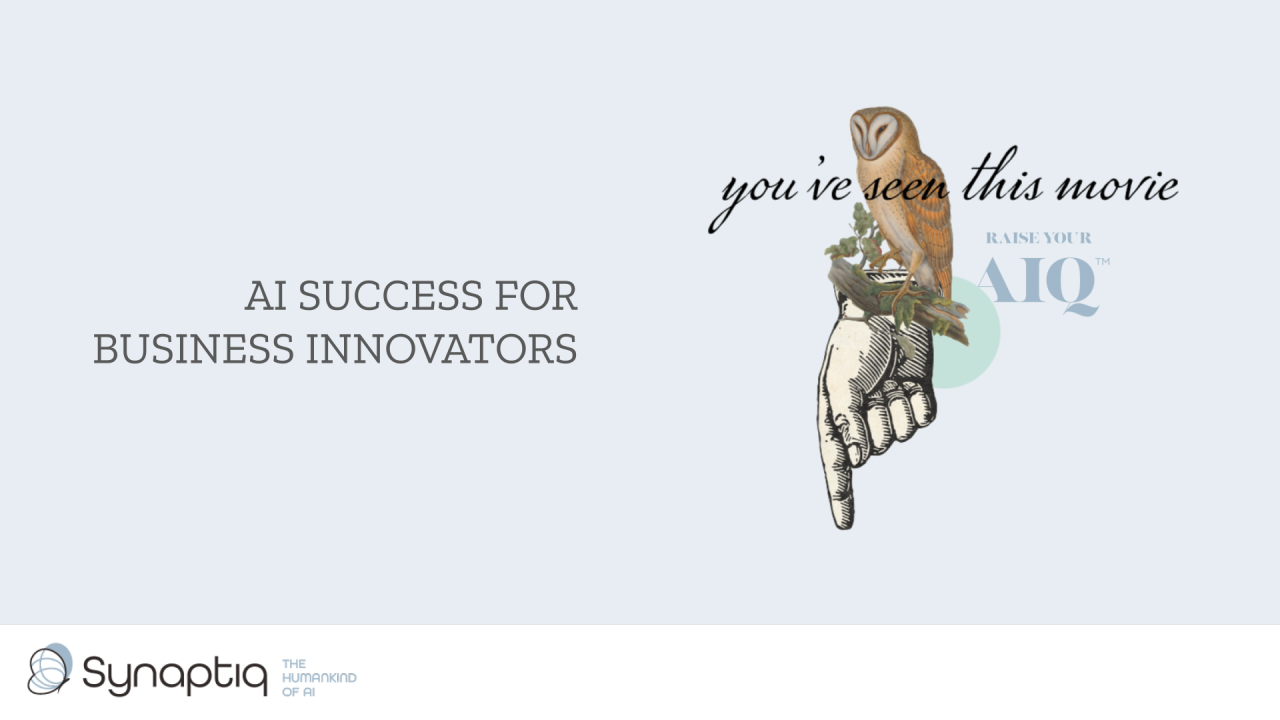Traditional Business Rules vs. Predictive Software Features
I spent nearly half of my career writing requirements and developing and testing software the traditional way....
|
CONSTRUCTION & REAL ESTATE
|
 |
|
Discover how crafting a robust AI data strategy identifies high-value opportunities. Learn how Ryan Companies used AI to enhance efficiency and innovation.
|
| Read the Case Study ⇢ |
|
LEGAL SERVICES
|
 |
|
Discover how a global law firm uses intelligent automation to enhance client services. Learn how AI improves efficiency, document processing, and client satisfaction.
|
| Read the Case Study ⇢ |
|
HEALTHCARE
|
 |
|
A startup in digital health trained a risk model to open up a robust, precise, and scalable processing pipeline so providers could move faster, and patients could move with confidence after spinal surgery.
|
| Read the Case Study ⇢ |
|
LEGAL SERVICES
|
 |
|
Learn how Synaptiq helped a law firm cut down on administrative hours during a document migration project.
|
| Read the Case Study ⇢ |
|
GOVERNMENT/LEGAL SERVICES
|
 |
|
Learn how Synaptiq helped a government law firm build an AI product to streamline client experiences.
|
| Read the Case Study ⇢ |
 |
|
Mushrooms, Goats, and Machine Learning: What do they all have in common? You may never know unless you get started exploring the fundamentals of Machine Learning with Dr. Tim Oates, Synaptiq's Chief Data Scientist. You can read and visualize his new book in Python, tinker with inputs, and practice machine learning techniques for free. |
| Start Chapter 1 Now ⇢ |
By: Stephen Sklarew 1 Apr 8, 2025 12:55:51 PM

If you don’t take a TOP DOWN and BOTTOM UP approach to design user-facing AI software, you’ll suffer the consequences of missed timelines, a blown budget, or user rejection.
When designing software products it’s common to apply a user-centered approach.
After all… if users don’t like your product, IT WON’T BE USED.
Involving users in the design process lowers your adoption and engagement risks.
This TOP DOWN design approach simply makes sense.
It is much less common to see teams design software based on data — a BOTTOM UP approach. Building products that integrate with other systems or modernizing products that already have data lend themselves to this approach. And these projects often uninvest in the user-centered approach.
It’s extremely rare for design teams to apply both approaches simultaneously.
This is a HUGE MISS.
I can’t even count how many times I’ve led product efforts where the “long tail” work was making sure the data stored in the database (or other system) was properly mapped to the fields on the user interface and visa-versa.
This problem is amplified when building user-facing AI products.
Most of our clients have separate data and product development (or business intelligence) teams. At the beginning of a new initiative, they do their work independently only to find things don't line up late in the game:
As innovation leaders, I encourage all of you to bring your product and data teams together early.
Codesign your AI product from the beginning.
And, most importantly, continue codesigning the product’s user experience, data, and AI models as it crystallizes throughout the lifecycle.

Synaptiq is an AI and data science consultancy based in Portland, Oregon. We collaborate with our clients to develop human-centered products and solutions. We uphold a strong commitment to ethics and innovation.
Contact us if you have a problem to solve, a process to refine, or a question to ask.
You can learn more about our story through our past projects, blog, or podcast.
I spent nearly half of my career writing requirements and developing and testing software the traditional way....
April 8, 2025
If you don’t take a TOP DOWN and BOTTOM UP approach to design user-facing AI software, you’ll suffer the consequences...
April 8, 2025
I regularly meet executives that are pondering what to do with AI.
Typical responses I hear are:
“Clearly it’s...
April 8, 2025